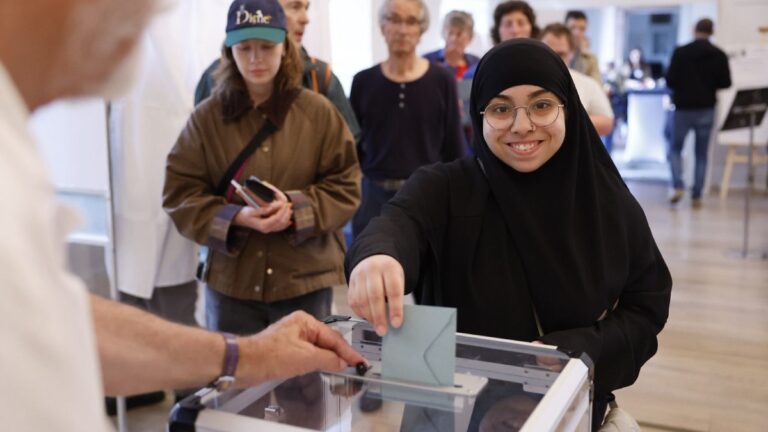A new survey has analyzed demographic data on how the French voted in the legislative elections.
The first round of early legislative elections in France on Sunday was marked by a high turnout and a record result for the far-right National Rally (RN).
Nearly 67% of France’s 49.5 million voters turned out to vote, a level not seen since the late 1990s. The RN won 33% of the vote and could, next Monday, dominate the National Assembly and possibly take control of the government.
The left-wing New Popular Front (NFP) party came second with 29% of the vote, while French President Emmanuel Macron’s centrist coalition suffered its second landslide electoral defeat in less than a month, coming third after winning just over a fifth of voters.
The results of the RN and the centrist coalition Ensemble are very close to those they obtained three weeks earlier in the European elections, which led Macron to dissolve the Assembly and call early elections.
So who did the different parties succeed in attracting or not?
The youth vote
According to Ipsos, which surveyed more than 10,200 voters in the days leading up to the first round to analyze the poll’s demographics, the RN won the most votes in every age group except those under 34 and over 70.
The highest proportion of senior votes (32%) went to Macron’s Ensemble coalition, but the centre fared very poorly among young people, who instead voted primarily for NFP. Up to 48% of 18-24 year-olds voted for the left-wing coalition, according to the Ipsos survey.
“One of the keys to Emmanuel Macron’s success was attracting young people in 2017, firstly because he embodied a form of political and generational renewal,” Frédéric Michaud, deputy director general of the OpinionWay polling institute, explained to Euronews.
“But he has aged and, above all, there is now a much younger incarnation of him, Jordan Bardella,” explains Michaud, which partly explains the appeal of the RN.
The far-right party came in second in the youth vote, winning about a third of the vote in the 18-24 and 25-34 age groups.
Bardelle has a large following on social media, particularly on TikTok, where he is more likely to be seen hobnobbing or drinking beers with voters, and sharing random thoughts in “behind the scenes” videos than breaking down the RN’s actual policies.
“For [the hard-left] “La France insoumise (LFI) and the New Popular Front (NFP), in general, are a little more classic. These are votes that traditionally attract more young people than other electoral options,” explained Mr. Michaud.
The popular vote
According to Ipsos, the majority (54%) of people who declared themselves to be “disadvantaged” overwhelmingly supported the RN. The far-right party also obtained the largest share of votes from the “working class” (38%), with a three-point lead over the right-wing party. the left coalition.
Most voters who said they were struggling to make ends meet or were relying on savings and/or loans to survive (41% and 46% respectively) also backed the RN ahead of its left-wing rivals.
This is a dynamic that has grown over the past decade, Michaud told Euronews, partly because of a “feeling of abandonment and betrayal” felt by the left-wing electorate towards the Socialist Party that led the country between 2012 and 2017 under the presidency of François Hollande.
Macron is not immune to this situation either, having been an adviser to Hollande at the start of the mandate before spending two years at the Ministry of Economy. His policies since arriving at the Élysée are widely seen as a continuation of the work he began at the ministry with reforms aimed at reducing red tape for businesses, raising the retirement age and eliminating the wealth tax.
This made the left-wing electorate more receptive to the RN’s message “which was able to talk about purchasing power, their daily concerns, particularly in terms of security,” said Mr Michaud.
The protest vote
Unsurprisingly, a majority of voters who declare themselves satisfied or very satisfied Macron voted for his centrist coalitionaccording to the Ipsos survey.
But a third of those who said they were dissatisfied with him preferred the NFP, while a majority (53%) of those who felt very dissatisfied chose the RN.
So, were people protesting against the RN or voting to support it?
“It’s both,” the OpinionWay journalist told Euronews. “The National Rally has long been a tool for sanctioning the power in place, for expressing anger, for protest in any case.”
“It still exists but we are seeing more and more votes of support… so it is not only a way of opposing, it is also a choice of ideological adherence to the different measures that are proposed by Jordan Bardella’s party,” he added.


